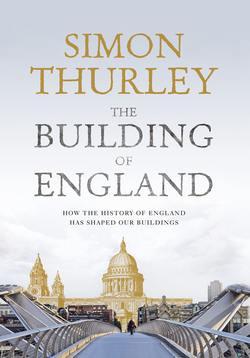Читать книгу The Building of England: How the History of England Has Shaped Our Buildings - Simon Thurley - Страница 36
Introduction
ОглавлениеThe hundred years after 1250 are among the most energetic, inventive and extravagant periods of building in English history, a time in which English architecture became as distinctive as its national character. The building boom that started in the 1220s continued strongly up to about 1300 (fig. 87). This almost precisely mirrored an extraordinary period of economic growth and national prosperity that was underpinned by rapid population growth (fig. 88).
Yet the period was not one of political stability. Politically it was characterised by a struggle between the Crown and the aristocracy. In 1215 King John had been forced to sign Magna Carta, a charter that protected barons, freemen and the Church against the arbitrary actions of the king, emphasising that royal power was held under the law. This, and the struggles to enforce it during subsequent reigns, are hugely important for England. Unlike France, where the king answered only to God, in England monarchs were not only below God but also subject to the law of the land.
John’s reign descended into chaos and civil war. He died in 1216, to be succeeded by his son Henry III, who was only nine. Most of the country was in the hands of the nobility, who were in revolt against John, and in London resided their ally, Prince Louis, heir to the French throne, whom they wished to crown king. But after the Battle of Lincoln in 1217 Henry and his party soon regained control, and Henry was to go on to reign for 46 unstable and quarrelsome years. The crisis of 1216–17, Henry’s subsequent favouritism towards foreign advisors, and the heavy-handed exercise of papal jurisdiction were important components in a strengthening sense of English identity during his reign. The process of national definition continued under Edward I, who came to the throne in 1272 at the age of 33. Edward was entirely different to his father; the first 20 years of his rule were characterised by decisiveness and determination, and saw the conquering of North Wales and almost continual war with Scotland. These years also saw persistent and heavy taxation, strengthening the role of parliament. Yet English national identity was also strengthened, partly in counterpoint to resurgent identities in Scotland and Wales.1
Fig. 87 Graph showing volume of cathedral and abbey building in England 1100–1500. The upper curve represents the average trend of 40 major building campaigns in each decade; the lower curve the average trend of campaigns started by decade at 85 buildings.
Fig. 88 The estimated population of England 1086–1786. The catastrophic effects of the Black Death in 1348 can be clearly seen.
Edward II, who came to the throne on Edward’s I death in 1307, was completely unsuited to kingship; weak, vindictive and directionless, he squandered the goodwill of the aristocracy, who had supported his father. He was deposed in 1327 and replaced by his son Edward III. On Edward III’s accession the monarchy was ineffectual and unpopular, and the king was only fourteen. Yet Edward went on to forge a reputation as one of England’s greatest warrior kings. John and Henry III had lost all the Crown’s great continental possessions except Gascony, which Henry had agreed to hold from the French king. Tension over this, and Edward’s claim to the French throne, led to the Anglo-French wars of 1337 to 1453, known as the Hundred Years’ War.
